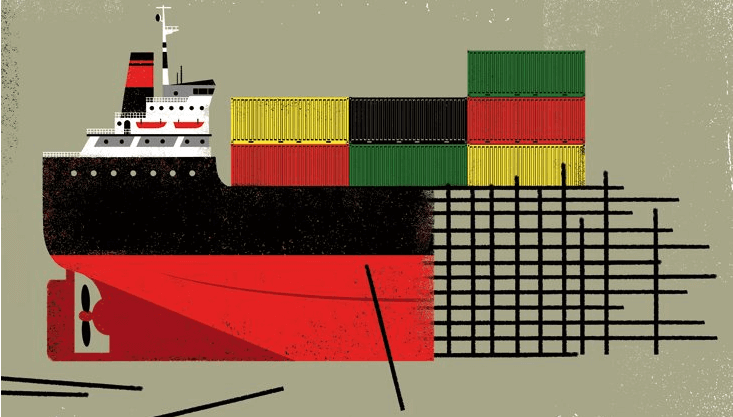
Our Projects are
Transforming African Trade
Quick Contacts
2nd Floor, Fidelity Insurance Centre Waiyaki Way, Westlands

As the world’s economic giant – the United States – continues to wage economic war against China, Mexico, Turkey and, more recently, India in establishing tariff barriers against their products, African countries have opted to spurn protectionism and embrace intraregional trade. A significant and historic step was taken on 30 May, as the African Continental Free Trade Area (AfCFTA) came into effect.
What does this all mean, and is it cause for celebration? A market potential for goods and services of 1.2 billion people, an aggregate gross domestic product (GDP) of $2.5trn, the reduction of tariffs and the free movement of labour is not to be sniffed at.
I know this, as I come from a country of 2 million people and a GDP of circa $17.5bn. Investors want access to a large consumer base and the benefits of scale cannot be underestimated for attracting foreign direct investment.
Yes, the agreement is indeed a cause for cautious celebration. The speed with which it has been brought into effect from June 2015, when the negotiations first commenced to establish the continental free trade area, to May 2019, when 51 of 54 African countries signed up, is nothing short of a miracle.
We need to applaud the tenacity of our leaders in getting here.
As a continent, intraregional trade is an economic imperative. Currently only 12% of trade is within Africa, while 75% of our exports to the rest of the world are still mainly minerals (crude oil and copper), according to United Nations Conference on Trade and Development.
With the elimination of tariffs, intraregional trade could increase by approximately 15 to 25% in the medium term. The expectation of the AfCTFA is to stimulate further economic growth through industrialisation, improved infrastructure and increased investment.
However, it takes more than just the removal of tariffs to drive this growth. There are significant non-tariff barriers that require improvement before we see the beneficial impact.
Many of our supply chains are undeveloped, with significant inputs imported from the rest of the world leading to costly finished products. Manufacturing companies have had to backward integrate, limiting specialisation. The mere fact that many of our countries continue to still be primary commodity exporters is cause for great concern.
So, is this agreement a panacea? Absolutely not. It is the beginning of a very long and complex journey, with significant work ahead. It is significant work that needs to start at a national level for many of our economies, where our basic infrastructure is wanting.
Many economies are characterised by poor transportation and logistics infrastructure, which has impeded the ability to move goods from one part of the country to another, let alone across borders. Inefficient and costly border processes coupled with poor customs practices have created more bottlenecks and stifled economic growth.
The basis for effective intraregional trade is that each country should at least have a comparative advantage in the production of some good or service.
Unfortunately, many of our economies are undifferentiated, with limited industrialisation and a significant dependence on imports for even basic foodstuffs.
Am I being too negative? No, I am being a pragmatist. The end goal of the AfCFTA is an economic imperative that we ignore at our peril as an African continent, especially in the current context of global trade wars.
Currently, businesses face much higher costs when trading within Africa than outside of the continent.
The how to get where we want to be is therefore a critical question.
First and foremost, our leaders must bring along their citizens. These sorts of agreements cannot be negotiated by technocrats to the exclusion of the private sector. Extensive and meaningful consultations with businesses are required to ensure that governments understand current concerns and frustrations.
Effective communication to explain the benefits of more open borders for goods, services and labour is critical if we are to see proper adoption and execution.
Investment in our infrastructure is a critical enabler and non-negotiable foundation for successful intraregional trade. Port, road, railway and telecommunications infrastructure must be improved to reduce trade costs.
In addition to hard infrastructure, it is important that logistics, freight handling services and customs procedures are uniform and transparent. The use of technology and integration into financial payment systems will be vital in enhancing efficiencies at border crossing and ports.
It will be important that AfCTFA leverages the lessons learned from the RECs. What has worked and what has not worked? How do we remove non-tariff barriers? Rules of origin issues will require deft negotiations – they should be simple, transparent and adaptable.
Lastly, can the agreement work without one of the continent’s largest economies – Nigeria? I believe Nigeria is necessary for this agreement to achieve its potential.
The most populous country, with one of the highest costs of doing business, will benefit significantly and the spillover effect into surrounding economies will be enormous. It is therefore important that the powers that be find a way to engage with Nigeria in positioning its pivotal role in achieving a truly powerful continental free trade area.
The road ahead is long and not without complexities, and the aspirations are ambitious. This agreement and free trade area is long overdue.
I hope the commitment that has been shown thus far by our leaders continues and that the economic imperative far outweighs any political machinations.
Source: The Africa Report
Disclaimer: The views and opinions expressed in this article are those of the authors and do not necessarily reflect the official policy or position of TradeMark Africa.